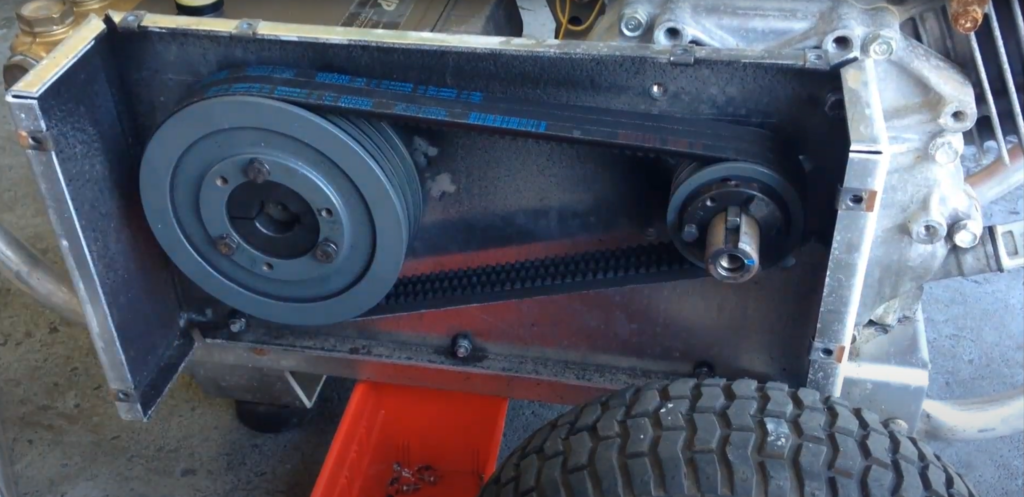Why Belt-Driven Pressure Washers Outperform Gear-Driven Alternatives

In this blog I want to talk about why belt-driven pressure washers outperform gear-driven alternatives. While browsing various forms of social media one question inevitable seems to cross my feed every so often and it goes something like this:
“Hello, my name is John Doe and I’m just getting started with pressure washing. I am looking to purchase one of these pressure washer, what do you think, any suggestions?”
That person is eventually peppered with a litany of answers ranging from good to bad. I want to key in on one single aspect when thinking about purchasing a pressure washer. Especially if you plan on running it for 3 to 4 hours a few times a week. The way the water pump is being driven.
There are two primary types of pressure washers available: belt-driven and direct-drive. In this blog, we will discuss why a belt-driven pressure washer is superior to a direct-drive pressure washer.
Reduced Shock
One of the primary benefits of a belt-driven pressure washer is that it has fewer moving parts than a direct-drive pressure washer. The belt not only replaces a lot of these parts, it absorbs the vast majority of the shock from the engine and reduces wear on the pump, resulting in fewer breakdowns and to a much longer lifespan. The direct-drive pressure washer is more prone to damage because the pump is connected directly to the engine and the vibration and heat inevitably damages the pump.
Reduced Heat
A belt-driven pressure washer’s pumps run on a gear reduction pulley system, allowing pumps to run at a lower RPM than direct drive pumps. This reduces the heat and lessens the wear and tear associated with consistent use. Heavy and extended use applications will require a belt-driven pump, that is why all commercial pressure washing companies use them. That’s also why a belt-driven pressure washer is a good investment if you plan to use it on a regular basis, as they hold up well over time.
Increased Flexibility
Belt-driven pressure washers offer greater flexibility. Not only can you hook them directly up to a customers water spigot, belt-driven pressure washers tend to have a much easier time drawing water from a buffer tank. That is not to say that a direct-drive pressure washer can not utilize a buffer tank, they certainly can. However, If you use a buffer tank, it is recommended using a belt-driven pressure washer.
In conclusion, a belt-driven pressure washer offers many advantages over a direct-drive pressure washer. It provides a longer life span and increased flexibility. Therefore, when choosing a pressure washer, it would be wise to consider the benefits of a belt-driven model to ensure that you get the most out of your investment.
Suggested Starter Pressure Washer
Lastly, while we are on the subject of buying a starter pressure washer, for lack of a better term, I would recommend buying something with a Honda motor and a belt-driven pump that is 4 gallons per-minute. One with a bit nicer pump is worth the investment as well. If you buy anything smaller, you will wish you went with at least 4 GPM, trust me. Let me be the one to have made that mistake for you. I started with a 2.5 GPM direct drive. Mind you, anything over 4 GPM and you will venture off into the mandatory buffer tank territory. Sticking with a 4 GPM unit will allow you to use almost any residential spigot.
Hopefully this blog helped! If it did, we would really appreciate a like on Facebook! Check back here at www.tbsoftwash.com to learn more about professional soft washing and pressure cleaning. You can also follow us on all of the major social media platforms @tbsoftwash. Don’t hesitate to contact us with any questions!
Disclosure: Links contain affiliates. When you buy through one of them we will receive a small commission that is at no cost to you. Thank you for supporting Tampa Bay Soft Wash & Pressure Cleaning and allowing us to continue to bring you content.
